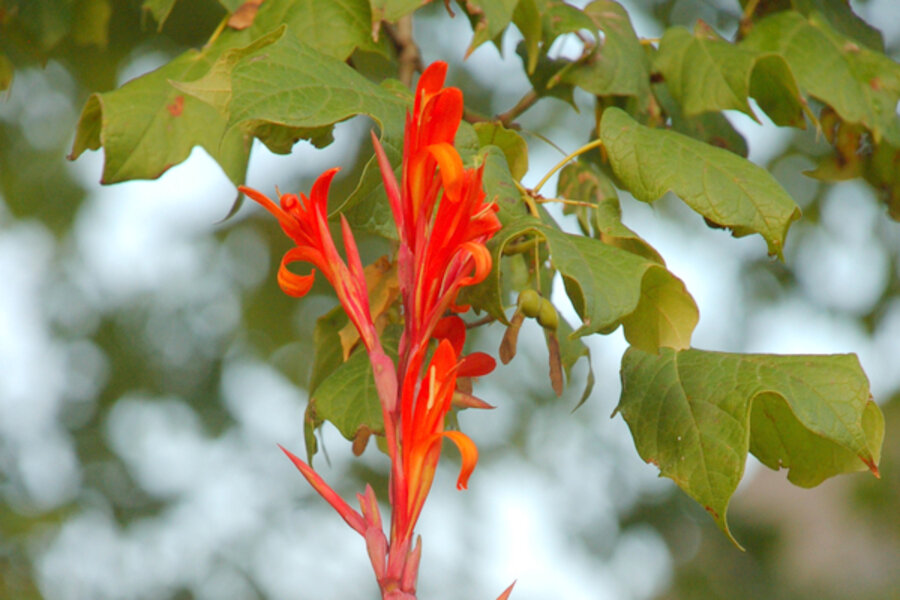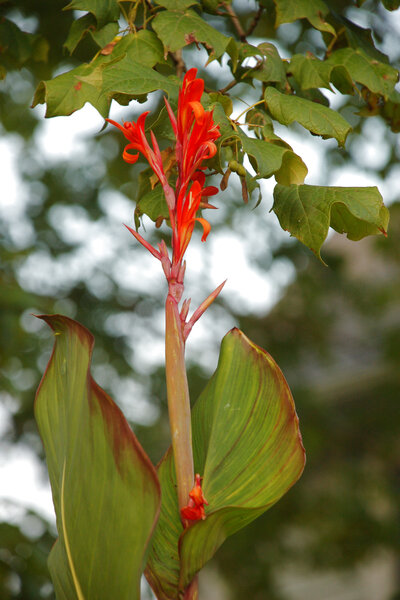The canna that thinks it’s a banana
Loading...
You may be familiar with the whole canna-banana style of tropical gardening in areas where the climate is decidedly nontropical. It's zonal denial with an emphasis on big ol’ honkin’ leaves.
But did you know there actually is a banana canna? Yup, Canna musafolia (horticultural Lain for banana is “musa”). This bold and architectural foliage plant readily grows to 6 feet tall and its long, red-tinged leaves can easily be mistaken for those of a banana tree.
It is, however, much easier to overwinter and is hardier than even Musa basjoo, the banana tree famed for being hardy in most of Zone 5.
Give it shelter and shade
But even in singing its praises, plant catalogs stress over and over that the banana canna “rarely flowers.” Well, after growing this honker for five or six years now, I am here to tell you otherwise. This dang-fool “foliage plant” flowered almost all summer long this year. Which is a heck of a sight longer than just about anything else in my Iowa garden.
And the flower is a pretty radiant color, too, kind of a fiery orange-red (and overhead), which really lights up the shady and sheltered areas where I plant it.
And I say “areas” plural because the tubers reproduce readily and can be divided to be planted elsewhere willy-nilly. That also makes them great pass-along plants, so you can give extras to friends and neighbors.
While the banana canna readily accepts full-sun conditions, such exposure usually means more winds than the foliage can bear. Again: like a banana tree.
When winter comes
Overwintering the banana canna is easier than with most bulbs, corms, tubers, etc., because it is so robust. When a hard freeze finally blasts the foliage, cut off the stalks at about the soil level, dig up the mass of tubers and put it in some kind of container or even a plastic bag. This is the point in which I often divide the tubers, if only because the mass can get too big for one bag.
Bring the bagged plants into the garage for a day to let them dry out, then put them in the dark cool recesses of your basement where you have all your pineapple lilies, callas and elephants’ ears resting for the winter.
Then next season, you won’t have to buy a single plant in fashioning your tropics on the tundra. Think of it as Instant Maui. Just add water.
What else I’m into this week: Miking my acoustic guitar. Shades of CSN&Y!
-----
Craig Summers Black, The Transplanted Gardener, is an award-winning garden writer and photographer who is among more than a dozen expert gardeners who blog regularly at Diggin' it. You can read more of what he's written at Diggin' It by clicking here. You may also follow Craig’s further adventures in gardening, music, and rural life on Twitter.








